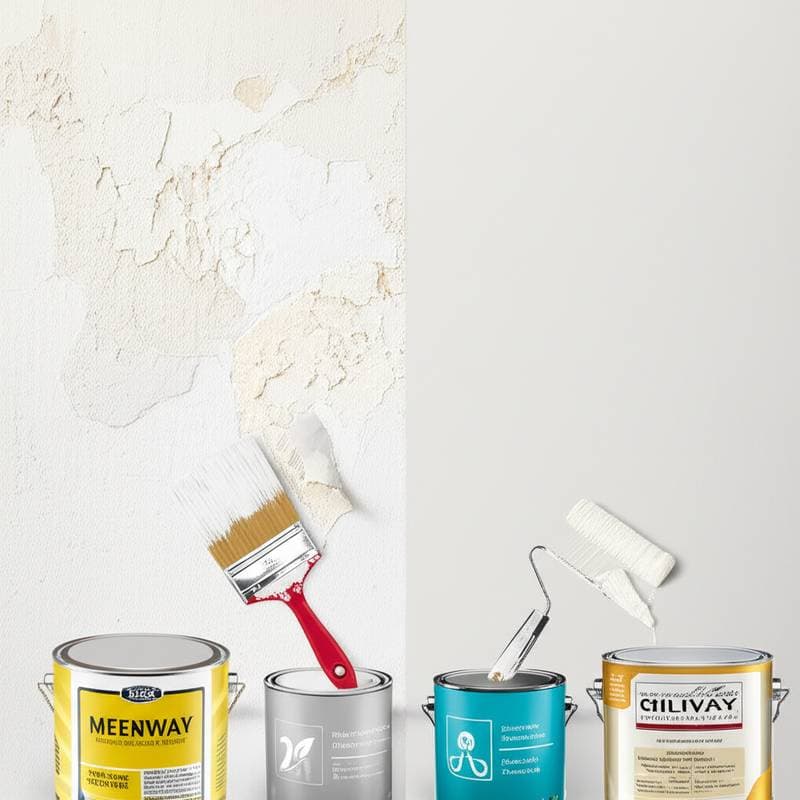Why Treating Plaster Like Drywall Ruins Your Paint
Plaster walls possess a unique density and smoothness that contribute to their enduring appeal. However, applying paint intended for drywall to these surfaces often results in peeling, blotchy, or chalky finishes that deteriorate quickly. Professionals encounter this error in various settings, from historic restorations to modern renovations, where assumptions overlook the distinct needs of plaster. The solution lies in tailored preparation, which ensures a durable and attractive result. This article explores the reasons behind these differences and provides practical guidance.
The Core Difference: Breathability and Density
Plaster differs fundamentally from drywall. Drywall consists of gypsum core encased in paper, creating a uniform and moderately porous surface. In contrast, plaster forms a thick, mineral-based layer that hardens over time and maintains breathability. This property allows moisture vapor to pass through, preventing buildup that could damage the surface.
Paints formulated for drywall frequently seal plaster too tightly, trapping moisture within the material. Consequently, bubbles or flakes emerge as pressure builds. To avoid this issue, select products and techniques that accommodate plaster's natural vapor transmission. Such an approach preserves the wall's integrity and extends the paint's lifespan.
Why Standard Primers Fail on Plaster
Primer serves as the foundation for any successful paint application. Products designed for drywall focus on sealing paper surfaces and joint compounds, providing even absorption control. Plaster requires alkali-resistant or mineral-compatible primers that permit vapor escape while stabilizing the substrate.
Applying a standard drywall primer to plaster may adhere initially, but it often develops weak bonds over time. Humidity fluctuations or internal pressures cause cracks, particularly along edges and seams. For optimal results, consider these options based on budget:
- Low budget: Apply a diluted acrylic primer suitable for masonry or plaster in thin, uniform coats.
- Mid-range: Select a mineral or lime-compatible primer to preserve breathability.
- High-end: Opt for a silicate-based primer that bonds chemically with the plaster for superior durability.
The Moisture Factor: Hidden Trouble
Plaster naturally absorbs and releases moisture, which helps maintain indoor humidity levels. This characteristic enhances comfort in living spaces. Sealing the surface excessively disrupts this balance, allowing even minor leaks or condensation to cause bubbling from beneath the paint layer.
In one restoration project, a team applied conventional drywall paint over aged plaster in a studio. Within two weeks, the finish developed uneven patches. Scraping revealed trapped dampness underneath. Switching to a breathable mineral paint resolved the problem, yielding a smooth and consistent appearance without further damage.
Perform a simple moisture assessment before proceeding. Secure a plastic sheet to the wall with tape and leave it overnight. Condensation under the plastic indicates the need for extended drying or a permeable coating system.
Repairing Plaster Before Painting
Cracks in plaster occur as part of its natural aging. Proper repair ensures a stable base for painting. Avoid lightweight drywall spackle, which sets too rapidly and fails to integrate deeply with the plaster.
For effective fixes, follow these methods:
- Small cracks: Fill with patching plaster or a setting-type compound. Smooth the edges using a damp sponge prior to full hardening.
- Deeper damage: Apply a base coat of plaster and reinforce with fiberglass mesh for added strength.
- Historic surfaces: Employ lime putty, which matches the original material and retains breathability.
After repairs, sand lightly with fine-grit paper and remove all dust with a vacuum. Residual particles can compromise adhesion and lead to a lackluster finish.
Paint Choices That Work With Plaster
The selection of paint determines the longevity and aesthetic of the finished surface. Latex paints effective on drywall may restrict moisture movement in plaster, leading to degradation. Choose mineral paints, limewash, or breathable acrylics that facilitate vapor passage and support wall health.
Consider these categories:
- Budget-friendly: Use diluted masonry paint or soft matte acrylics marked as breathable.
- Mid-range: Select limewash or clay paints for added texture and visual depth.
- Premium: Invest in silicate mineral paints that chemically adhere to plaster, ensuring decades of performance.
These options often produce a natural, velvety sheen that enhances light reflection and adds elegance to the space.
Common Mistakes to Avoid
- Omitting primer: Without it, plaster absorbs paint unevenly, resulting in streaks and faded areas.
- Applying drywall mud for repairs: This material cracks on rigid plaster and detaches under pressure.
- Neglecting cure time: Allow fresh plaster to dry fully, as residual moisture weakens the paint bond.
- Selecting glossy sheens: Such finishes highlight flaws and peel more readily; prefer matte or eggshell for durability.
- Painting immediately after cleaning: Ensure surfaces dry completely to prevent adhesion issues.
Pro Tips for Success
Employ a soft-bristle brush or microfiber roller to apply materials gently and achieve even coverage on plaster. Lightly mist the surface before priming to regulate absorption and promote uniform settling. Test paint colors in small batches, as plaster's unique uptake may alter shades.
Examine prep work under side lighting to detect imperfections that match everyday conditions. Apply flexible caulk along edges where plaster meets trim to accommodate movement and prevent cracks.
Achieving Lasting Results on Plaster Walls
A well-executed paint job on plaster endures for decades, developing patina that enhances its charm. The material self-regulates moisture, contributing to a stable indoor environment. Whether revitalizing an older residence or preparing a professional space, attention to these details yields professional outcomes. Invest time in understanding plaster's properties to create surfaces that perform and please over the long term.



